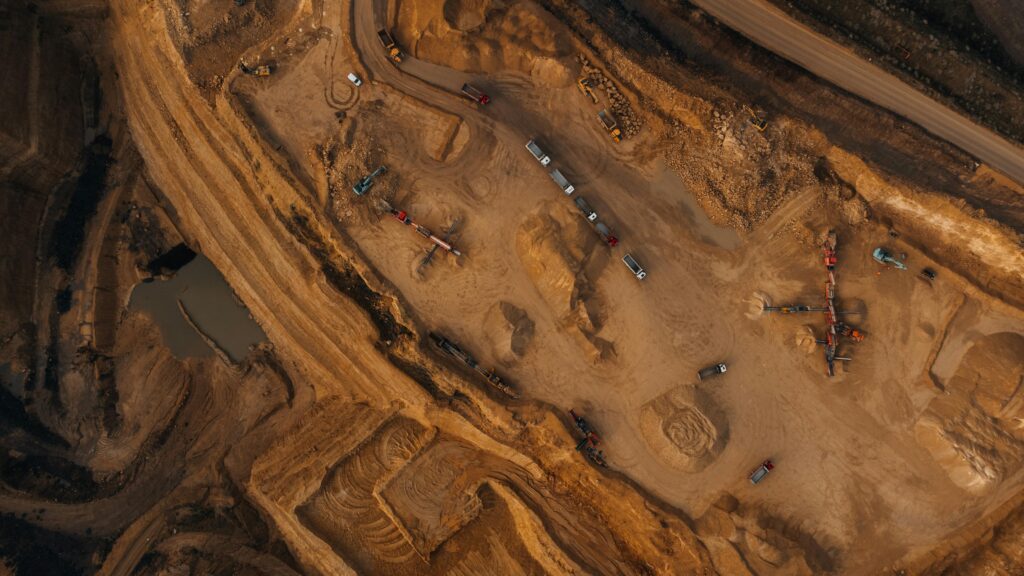The mining industry has always been responsive to technological innovation. It seeks gains in efficiency, safety, and productivity. Among the latest advances, the application of wireless power transfer technology in underground mines has incredible potential. Furthermore, this revolutionary approach can give a new face to the powering of mining equipment. So, no more cumbersome cables, or risks associated with traditional power distribution systems. Moreover, as the industry moves more toward sustainable and efficient practices, wireless power transfer presents the potential game-changing solution for what is ahead in changing the underground mining business. In this article, we will dive deeper into wireless power systems in underground mines. We will cover its basic principles, types, challenges, benefits, and more.
Revolutionizing Underground Power Distribution Using Wireless Technology
The application of wireless power transfer in underground mines is a whole new paradigm shift. This is in how the power is distributed and used in the most challenging environments. Moreover, the technology promises to overcome most limitations that traditional wired systems provide. Let’s know more about it ahead:
Basic Principles of Wireless Power Transfer
Wireless power transmission uses electromagnetic fields to transfer power. This is over distances between a power source and receiver, without physical connections. The mining application includes placing power-transmitting coils in mine tunnels, and the mining equipment is equipped with receiving coils. Furthermore, the resonant inductive coupling technology implies that both the transmitter and receiver are tuned at the same frequency. As a result, optimal power can be transferred along distances of several meters. Additionally, this principle enables the continuous powering of underground mining equipment as they move through the mine. So, it maximizes working efficiency.
WPT Types Suitable for Mining
Inductive and resonant coupling is the most used WPT method in mining scenarios. Furthermore, the resonant coupling is more efficient over greater distances, and for this reason, it is a perfect solution for the mine tunnel with varying distances between the mining equipment and the power sources. Moreover, magnetic resonance systems are very effective for power transfer over meters in distance. This is even in cases of less-than-ideal alignment between transmitter and receiver. So, this tolerance for misalignment is critical in a mine dynamic environment. Adaptive power control is also integrated into some systems that adapt the power output according to the requirements of the equipment and its location. As a result, it enhances efficiency and safety.
Barriers to Implementing WPT in Underground Mines
The nature of rock and the presence of metal structures create interference with the wireless power transmission. In addition, distance and cornering issues related to providing uniform power delivery along variable distances and through mine tunnel corners are other technical issues that researchers are actively working on. Moreover, a highly humid and even corrosive atmosphere in some mines poses challenges in sustaining the higher longevity of WPT equipment. Additionally, engineers are currently developing robust enclosures and protective coatings. This is to enhance the durability of both transmitters and receivers. Another major challenge is the difficulty of standardization between different manufacturers of equipment. This ensures technology has higher interoperability and greater acceptance.
Integration with Existing Mining Infrastructure
The shift to wireless power transfer systems in underground mines needs thorough planning and adaptation into the existing infrastructures. Furthermore, the process is not only technical but operational and economic too. So, Companies need to carefully weigh this before proceeding. Let us see more about this in the section:
Modification of Mining Equipment for Wireless Power Reception
Mining equipment manufacturers are designing models with an inbuilt wireless power receiver. Furthermore, for installed equipment, design retrofit kits are being made with minimal alteration to the installed equipment for wireless charging. Moreover, in this retrofit kit, the receiver coil, power management system, and relevant interface components will be provided. It must also ensure that the added elements do not compromise the functional integrity or structural strength of the equipment. As for the standardization of the reception system of wireless power, manufacturers are working to make it easier to integrate with all possible equipment used in mining-related operations. It includes loaders and trucks, drills, and conveyors.
Infrastructural Requirements in a System of WPT
Installation of wireless power transmitters across the mine tunnels involves a huge initial investment. However, the long-run benefits comprising less maintenance and higher flexibility often pay off to justify the initial investment. Furthermore, typically, it consists of in-floor or wall-mounted power transmission coils, power distribution control units, and safety monitoring systems. Moreover, more advanced WPT systems can include the integration of smart grid technology. This is to dynamically allocate power in real time based on the needs and priorities of the equipment operating in the mine. Additionally, such intelligent power management can help save enormous amounts of energy and improve the overall efficiency of a mining operation.
Safety Aspects and Compliance with Regulations
Since safety is always the first concern while introducing new technology to mining, WPT systems must meet very stringent standards for electromagnetic emission. Furthermore, they must be designed to operate safely in potentially explosive atmospheres. This would include having various extensive testing and certification processes. These ensure such wireless power systems do not interfere with other electronic equipment or pose other health risks to mine workers. Moreover, regulatory bodies are making new rules specific to WPT in mining environments. Such rules address limited exposure levels to electromagnetic fields and fail-safe mechanisms (if a system fails). So, there are expectations from mining companies to work in tandem with the regulators and the respective equipment manufacturers. This is to ensure that they become aligned with these standards and that changes are put in place.
Integration with Existing Mine Power Systems
Wireless Power transfer systems can be easily integrated into the existing mine power infrastructure. It generally works in combination with traditional methods during the transition. As a result, it avoids disruption to ongoing operations as WPT technology is stepped in. Moreover, integration strategies can include integrating existing power substations as sources for WPT transmitters; adopting smart switching systems, which can alternate from wired to wireless power depending on the location or type of equipment; and designing all-inclusive power management systems optimized for both conventional and wireless sources. This phased integration method enables mining companies to take hold of the benefits from WPT. It also allows to concurrently manage the technical and financial challenges of the transition.
Transforming Mining Operations: Productivity, Safety, and Sustainability
The implications of adopting wireless power transfer technology in underground mines are far-reaching. It extends beyond merely the distribution of power. So, let us learn more about it:
Increased Mobility and Flexibility in Equipment
In the absence of power cables limiting the mobility of underground mining equipment, mining equipment can move more easily throughout the mine and into areas formerly inaccessible. This mobility translates directly into improved efficiency for ore extraction and reduced idle time. Moreover, equipment can be redeployed quickly to other parts of the mine with much less hassle. This is in re-orienting power connections for more agile and responsive mining operations. Additionally, the elimination of cables offers avenues for innovative designs for new equipment. These can be much smaller and far more manageable. As a result, it opens up new ways to mining with enhanced rates of resource recovery.
Enhanced Safety through Cable-Related Hazard Elimination
The removal of cable-related hazards greatly reduces the source of occupational accidents in mines. Furthermore, enhancing mine safety with wireless power transfer technology translates to a reduction in tripping hazards, and electrical fires or shocks from damaged cables. So, this better safety environment can also pave the way for reduced insurance expenses and fewer work stoppages due to accidents. In addition, the removal of cables from the environmental space of the mine increases the field of view. It also reduces clutter. This allows employees to have a safe passage through tunnels and workspaces. Additionally, overall decreased physical equipment also means less interference in evacuations during an emergency. So, it can save lives in critical events.
Improved Maintenance Productivity
Wireless power systems are less demanding to maintain than traditional cable-based systems. Furthermore, the lack of downtime for equipment repair due to minimized total maintenance costs further adds up to a more effective mining operation. So, removing the wear-prone components of cable reels and plug connectors decreases the number of potential failure points. This is within the power distribution system. So, rather than just replacing or repairing cables damaged at various points, maintenance teams can focus on other important aspects of the upkeep of the underground mining equipment. In addition, the information collected by WPT systems on power consumption and equipment performance can be used in real time for predictive maintenance. It allows for better scheduling of service intervals and preventive repair before failure.
Environmental Benefits of WPT to Mining
Wireless Power Transfer saves on copper cables and reduces instances of equipment idling. This saves mining from its environmental footprints and increases its sustainability. Furthermore, production and end-of-life waste generated from cables goes minimal through the addressing of one major source of waste in mining. Moreover, WPT allows for more efficient distribution of energy and utilization of equipment. This reduces overall energy consumption. Additionally, some WPT systems also include energy recovery techniques. This is to capture and redistribute excess power back to the system due to braking or descending vehicles. These environmental benefits are in line with the increasing global requirement for sustainable mining practices. It can also help mining companies deliver on increasingly stringent environmental regulations.
To Sum Up
Wireless power transfer technology is bringing a significant change in mining operations, making it safer to power equipment. Furthermore, with the continuous evolution of the mining industry, embracing innovations such as WPT will be pivotal to maintaining competitiveness and filling the ever-increasing demand for minerals in all regions around the world. This transition to a wireless power system isn’t exactly about the technology leap, but rather being a step closer to a future where the mining sector can be sustainable and productive.
Interested in learning the latest technologies about how to make mining more efficient? Check out the 6th Mining 4.0 Summit on 6-7 November, 2024 in Barcelona, Spain. Keep abreast with the latest innovations as it promises to be full of case studies, panel discussions, and sessions of practical solutions and experiences that will keep you ahead of the competition. So, don’t wait any further and register now!





